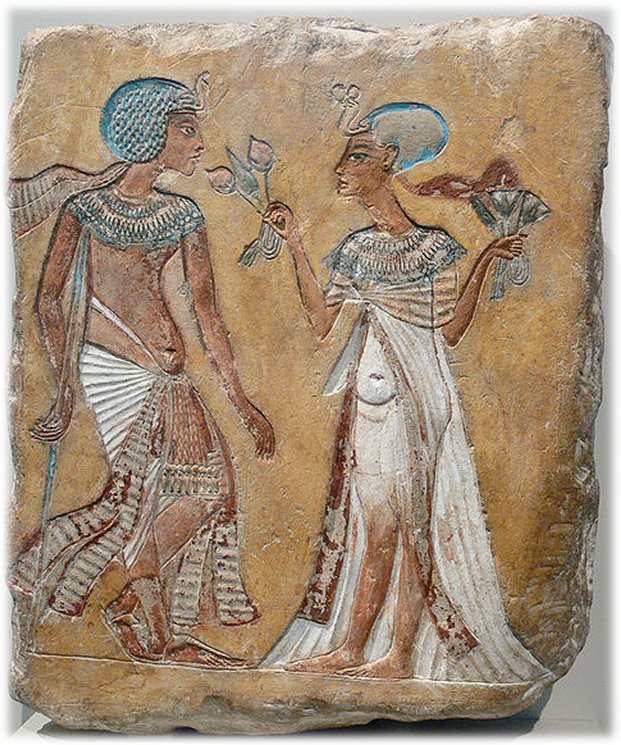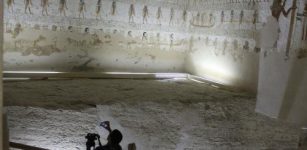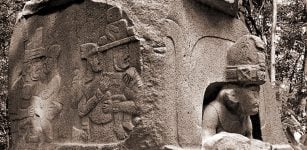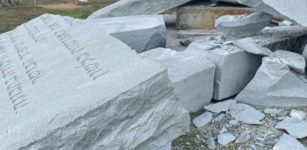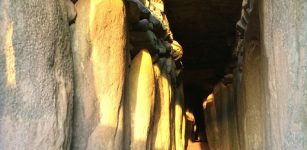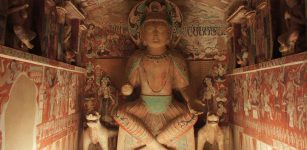Puzzling Whereabouts Of ‘Missing 6,000 People’ Who Built Holy City Of Amarna
MessageToEagle.com – One of remaining and unanswered questions regarding the pharaoh Akhenaten’s capital city of Akhetaten (modern Amarna), has finally been solved.
Archaeologists have long been puzzled about the whereabouts of the “missing” 6,000 people who toiled to build and maintain Akhenaten’s holy city devoted to the Aten – sun disk.
As we know, Akhenaten abandoned the worship of the Egyptian god Amun in favor of a different god, the Aten or sun disk and decided to built a holly city for the Aten far from Thebes.
After scouring the length of the Nile, he came upon a remote and desolate site in the middle of Egypt. This location was exactly half way between Thebes and Memphis, about 170 miles from each. The king gave his reasons in writing, and they can still be read today on top of the cliffs overlooking the city.
A symbol of the Aten has been carved into the rock as a boundary maker.
The estimated 6,000 ordinary people constructed and maintained all sacred edifices and infrastructure of the holy city of Amarna.
They died during the short 15-year period of the city’s construction and development.
Since archaeologist F.Ll. Griffith’s excavations in the 1920’s at Amarna, the whereabouts of these people have remained a puzzle for archaeologists.
“A will-of-the-wisp, the dream of a rich unplundered cemetery of the middle classes at El-Amarneh, full of choice vases and amulets, beckons to each successive explorer… but nothing came of the attempt except finding a few bones in holes in the high desert and scoring the sand stretches east of the town by many new trenches.
There are square miles of sand wastes levelled by wind and rain where a cemetery might lie without indications on the surface; on the other hand it is quite possible that no such cemetery ever existed.
The less important people of Akhenaten may have been buried with earlier and later generations in the enormous cemetery of Tunah on the edge of the western desert… Supposing that there was an average of 30,000 inhabitants, the number of those who died during that time [the fifteen years of the city’s lifespan], great and small, might have been 6000.
These might have filled a very large cemetery, but to judge by other cases in Egypt only a very small proportion were buried at all in such a way as to leave bones or other deposits to bear witness to their existence.
What happened to the rest can only be conjectured…” Griffith wrote in his excavation report.
Many of the elaborate unfinished rock-cut tombs of Akhenaten’s elite courtiers and high officials had already been found.
But the burials of the deceased of the estimated 30,000 commoners and laborers remained elusive – until 2001.
Now, archaeologist Barry Kemp of the University of Cambridge has gathered an important archaeological material and is able shed light on mysterious whereabouts of people who lived and built Akhenaten’s holy city of Amarna, but unfortunately
Kemp has directed excavations and surveys at Amarna for the Egypt Exploration Society since 1977.
It has come about through the desert GPS survey begun in 2001 and continued in subsequent years. First came the discovery of two cemeteries (clearly robbed) of what must be relatively poor graves on the flat desert not far from tomb no. 6 belonging to Panehesy, “chief servitor of the Aten in the temple of Aten in Akhetaten,” the southernmost of the North Tombs.
In 2003 a third cemetery was discovered on the east side of a narrow wadi which runs back into the low escarpment behind tomb 25 of the South Tombs group.
In 2004 two further cemeteries likely to be of the Amarna Period were located on the floor of another wadi which cuts through the cliffs where the North Tombs are located.”
Most recently, from 2006 to 2013, Kemp’s excavation team has uncovered artifacts and bones from a cemetery site located near the South Tombs, a site where preliminary evidence indicated that it held the burials of a poorer class of people.
See also:
10 Fascinating Facts About Pharaohs
Taharqa – The Most Powerful Of The Black Pharaohs
The Amarna Letters: Diplomatic Correspondence In Ancient Egypt
Ancient Egyptian Capital Tell El-Amarna Mapped Through Satellite Imagery System
“Of the various cemeteries located it is the one that has the most varied material present on the surface, including late 18th Dynasty sherds, a few pieces of glass vessel and faience, and mud bricks.”
But, it has been partly washed away by occasional floods that have swept down it and across the desert plain in front. The floods left behind a scatter of human bones along both the sandy floor of the wadi and the watercourses that cross the desert plain beyond,” Kemp explains.
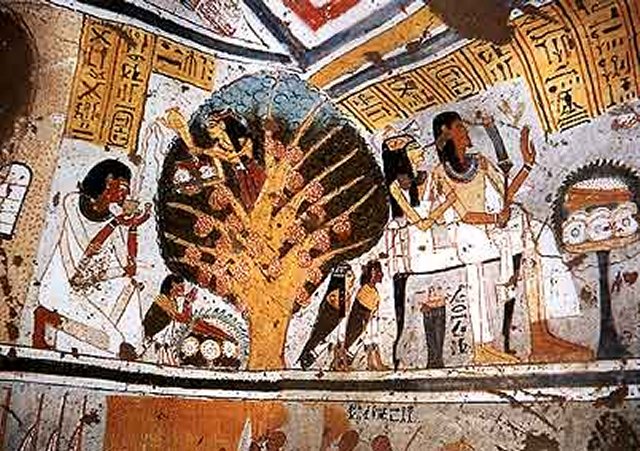
The pharaoh Akhenaten, best known as the ‘heretic pharaoh’, employed thousands of workers and officials to build and administer the city of Akhetaten (Amarna) as his new capital on virgin land north of Thebes in Middle Egypt. Dedicated to the veneration of his new monotheistic religion of worship to the Aten, construction commenced in or around Year 5 of his reign (1346 BC) and is thought to have been completed by Year 9 (1341 BC).
Copyright © MessageToEagle.com. All rights reserved. This material may not be published, broadcast, rewritten or redistributed in whole or part without the express written permission of MessageToEagle.com



